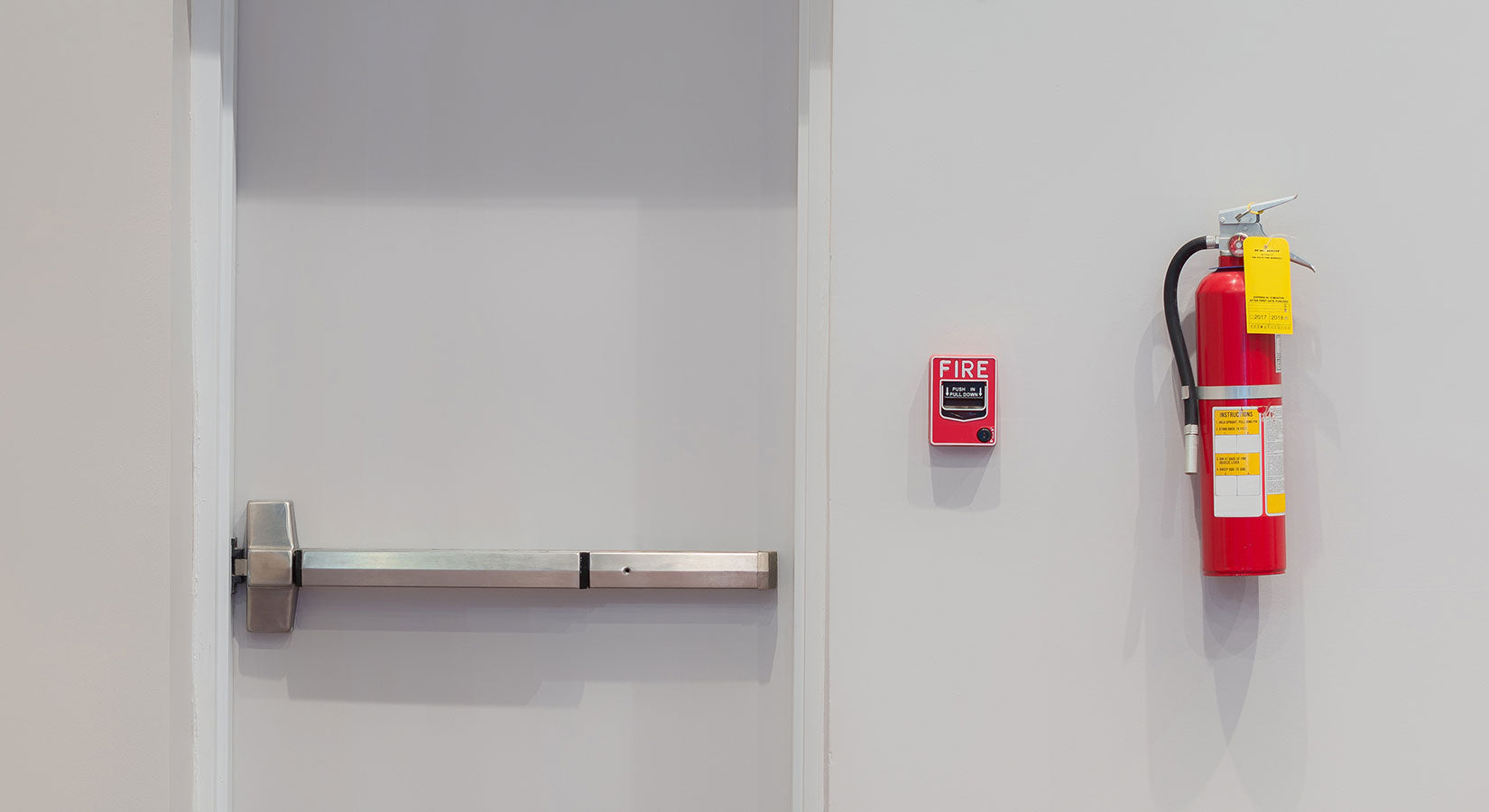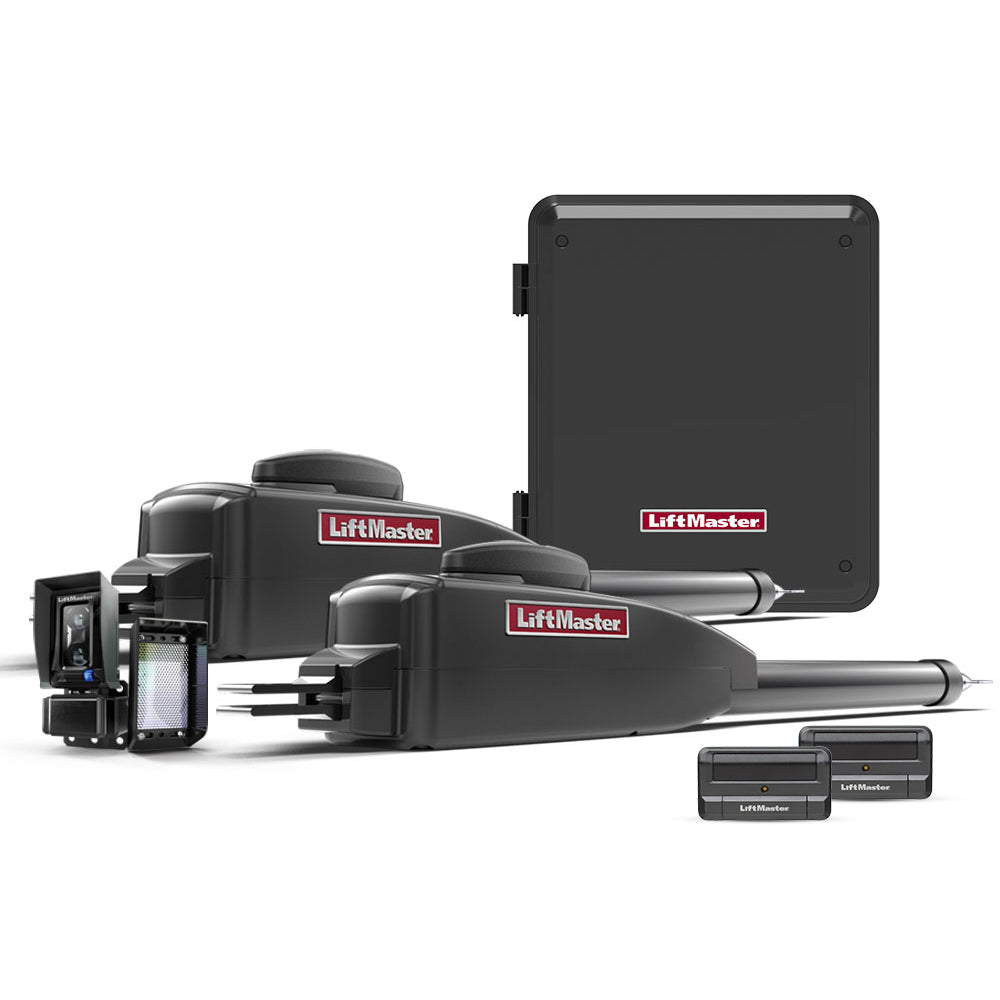Door exit devices are essential to maintaining security for commercial, residential, and industrial properties. An exit device, a panic device, a crash bar, or panic exit hardware is installed on an interior or exterior door, so it remains locked from the outside.
At the same time, people can access the mechanism to push and exit the door from the inside. When panic hardware is installed between sections or departments in a healthcare facility, for example, this can prevent entry in one direction while allowing for a quick exit.
Why Are Exit Devices Important?
Exit devices are built to accommodate many types of doors, including wood, fire-resistant exits, and commercial doors. It’s a requirement in many residential and commercial buildings following security and safety regulations, though even where it’s not legally mandatory, many property owners invest in panic hardware to allow for easy exit in the event of a fire or an emergency.
Exit door hardware offers significant advantages for commercial facilities, specifically for security, safety, and ease of use. Various security hardware and mechanisms improve security, including the vertical rod exit device, vertical rod device, and rim exit device.
These can be installed on specific entry doors to restrict entry to a building or department. This measure prevents unauthorized individuals or the general public from entering while allowing people inside to exit quickly and without delay.
If there is a security concern or sudden emergency, employees, customers, and other authorized individuals inside a building or premises can quickly exit, with minimal force, when pushing the crash bar or panic bar to leave.
In the event of a fire, intruders, or another type of emergency, panic bars provide quick and efficient evacuation, which can be activated in a hurry. Von Duprin offers a wide range of solutions that fit various types of single doors or buildings with both single and double doors.
The exit devices are easy to push for evacuation, so anyone can use them, including children and people with mobility challenges.
Design Options for Exit Devices
Several types of exit device designs vary in appearance and function while providing the same level of safety and quick access.
- Integral device push bars are recessed to flush nearly with the door. They are not raised or contain a bar to push down and forward, as other devices.
- Touch bars are the most common option for exit devices, as they are easy to activate by pushing the pad against the door to release and exit.
- The crossbar device extends with a handle pushed down to activate the release.

Von Duprin’s rim exit devices are among the most efficient, with a bar that’s easy to push with minimal effort, which provides a quick exit in the event of an emergency.
These panic devices work well with door closers, ensuring that the door returns to a closing position to secure and engage, along with other security items, including electric strikes, locks, and maglocks.
Basic Types of Exit Devices
Various types of exit devices fit various types of doors and exits based on the commercial door hardware, the need for added security, and the weight and material composition of the egress door.
Exit Rim Device
Rim exit devices are typically installed on single doors but can be customized to fit double doors. Rim exit devices are typically installed on single doors but can be customized to fit double doors.
Vertical Rod Device
The concealed vertical rod device is ideal for double doors or single exits where heavy-duty security is needed. This type of device is installed with top and bottom rods that extend toward the top and bottom of the door’s frame.
These door entry sets are affixed to the interior side of a door so that when it’s pushed to open, the rods attached to the panic device retract so that the lock is released and the door opens quickly.
These devices are excellent for buildings with restricted areas, with heavy-duty doors and exits that require greater security, such as hospitals, schools, and government buildings.
Mortise Exit Device
This type of device works with a mortise lock body positioned inside a pocket at the side of the door. These are among the top heavy-duty exit devices that are often used in buildings with high levels of security, where all or most areas have restricted access.
There are two main variations of this type of device: the concealed vertical rod (CVR) and the vertical surface rod (SVR), which both work effectively; only the concealed version of this push bar is more hidden, which is a preference in terms of design and appearance.
Choosing the Right Exit Device for Your Building
Which exit device is ideal for your building, interior, and exterior doors? The following criteria can provide the details you need to select the right fit for your exits:
- Is the type of exit a double or single door, and are you considering a mullion or a vertical bar separating a double door set?
- There are different types of panic devices based on the type of materials your doors are made of, such as aluminum, hollow metal, or wood doors.
- If you have fire-rated doors, you’ll need additional protection to ensure the exit functions with a higher level of safety.
- If you require a low noise level, some push devices are specifically designed to function in a quiet motion without any motorized parts or operation.
- The location of the door is an essential factor, as the exterior of an exit in a region with severe weather conditions requires additional protection and heavy-duty solid devices.
Summary
Von Duprin offers an excellent selection of door exit devices to provide the maximum security for all your building’s needs. These devices offer high-quality safety and secure closure so you can exit quickly and efficiently in unexpected situations.
Contact All Security Equipment’s customer service team to learn more about our Von Duprin products, exit devices, and door accessories.












